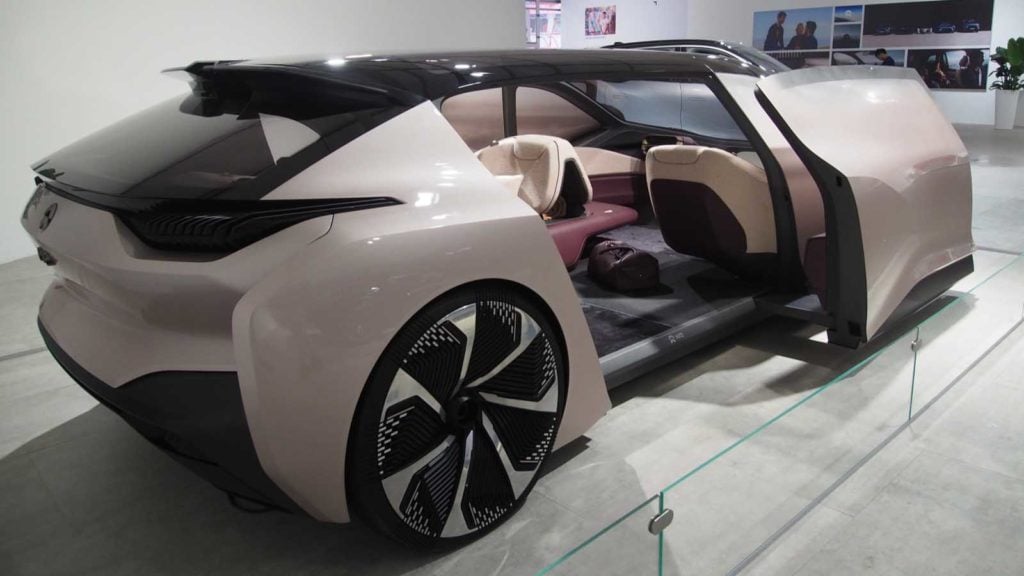Nio (NYSE:NIO), the Chinese maker of luxury electric vehicles, is not Tesla (NASDAQ:TSLA). But investors are treating NIO stock as though it is.

The shares have been a 10-bagger, gaining 1,227% in value through Nov. 24. The gains have come since the government of China announced it was handing the firm a lifeline, tying Nio to state-owned JAC Motors
Speculators, however, have said no to my skepticism. Since I last wrote about China’s government involvement in pumping up Nio in October, the shares are up 84%.
So what do I know?
Nio vs. Tesla
China is pushing Nio as the high end of its electric vehicle revolution, as a Tesla replacement.
Tesla’s third-quarter report said China could be the biggest market for its Model 3 sedan. This has investors ignoring Nio’s third-quarter numbers. These showed deliveries of just 12,206 cars, and gross margins of 13% on $666 million of revenue.
Bulls are betting that JAC can copy Tesla’s tech, and all its sales will go to Nio. But if that’s the case, why is Tesla up nearly 500% this year, and from a much higher base?
At its Nov. 24 opening price of $57.60, Nio had a market cap of over $75 billion, on what are expected to be $7.5 billion of sales this year. That’s actually “cheaper” than Tesla, whose market cap of $484 billion is powered by just $24 billion in sales.
NIO stock, in other words, is being priced like a mini-Tesla, and investors expect the Chinese government to make it a serious Tesla competitor. But if Nio is a government-controlled entity, why do they think western investors are going to get the benefit?
Citron’s Call on NIO Stock
Any stock selling for more than 10 times revenue is going to be volatile. NIO stock is no exception.
Shares were hit (briefly) earlier this month when Citron Research put out a sell on the stock. Andrew Left of Citron noted that Tesla repeatedly cut its prices in China to maintain share. He questioned whether Nio can compete profitably. You’re not buying a company or its prospects with Nio, he wrote, but “3 letters that move on a screen.”
What we’re seeing is an electric-vehicle bubble. It’s just like previous bubbles in Bitcoin, marijuana, and novel coronavirus vaccines. Bulls will respond that Bitcoin is bubbling again, that vaccine winners like Moderna (NASDAQ:MRNA) are holding their gains, and that Nio now trades above where it was when Citron said sell.
Electric Bubble
How do I know this is a bubble? NIO stock isn’t the only Chinese electric-vehicle company that investors are backing.
Li Auto (NASDAQ:LI) more than doubled this year and is now worth $36 billion. Xpeng (NYSE:XPEV) more than tripled and has a valuation of $52 billion.
U.S. electric companies are also drawing investment. Workhorse Group (NASDAQ:WKHS) is worth $3.5 billion, and Lordstown Motors (NASDAQ:RIDE) is worth nearly $5 billion. Even the old gas-powered companies got into gear on hope for electrics. General Motors (NYSE:GM) is up 64%. Even Ford Motor (NYSE:F) nearly doubled from its pandemic low of $4.50/share.
The problem is, they won’t all be winners.
The Bottom Line
China’s investment, and Tesla’s success, fueled a bubble in electric-vehicle stocks.
The electric-car market is growing fast, albeit from a small base. China represents half of that market. China also has most of the electric vehicle infrastructure, 83% of the publicly available fast-charging stations.
Given that, and continuing U.S.-China tensions, it stands to reason that Chinese electrics will eventually outpace Tesla. But not all the Chinese electric-vehicle stocks are going to be winners.
On the date of publication, Dana Blankenhorn did not have (either directly or indirectly) any positions in any of the securities mentioned in this article.
Dana Blankenhorn has been a financial and technology journalist since 1978. He is the author of the environmental thriller Bridget O’Flynn and the Bear, available at the Amazon Kindle store. Write him at [email protected] or follow him on Twitter at @danablankenhorn.
